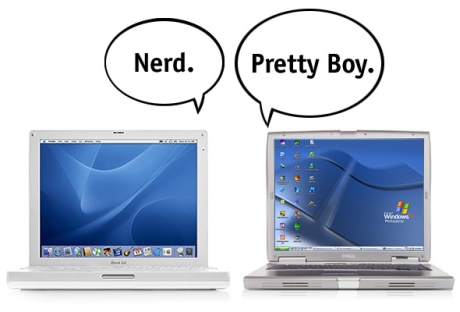Windows 7 On The MacBook Air: Don't Go There


But if you do, you'll find me enjoying it to the fullest.
Updated on July 28, 2011. I originally wrote this last year after purchasing the then-new MacBook Air 11. Recently Apple updated their MacBook Air line to include the new Sandy Bridge CPUs, the i5 and the i7, as well as boosting the available RAM and storage capacity. The method for installing Windows 7 on the new MacBook Air models should work just as well as it did for the old models. I should point out that this article was originally published on November 17, 2010, and the Windows 7 installation on my MacBook Air 11" is still as stable and fast as it was when I first installed it.
Also See:
Last month--that is, last month being October, 2010--Apple introduced an update to its MacBook Air line. Not just a re-vamped 13-inch model, but an 11-inch model as well. Reviews of both units were mixed; some folks complained about the older CPU and the price, saying that the more powerful MacBook Pro line cost less overall.
Back in 2008, Steve Jobs is quoted as saying “We don’t know how to make a $500 computer that’s not a piece of junk.” I can't entirely agree with that statement; there are perfectly fine netbook computers for that price or less that are solidly built and perform well within the scope of their processor, memory and video limitations. However, this is Apple we're talking about, and Apple isn't known for selling cheap, mediocre hardware.
Last Saturday, I bit the bullet and purchased the high-end MacBook Air 11, with a 1.6GHz Core2Duo CPU, 4GB of RAM, and 128GB NAND flash storage. It really is a stunning piece of hardware, and compared to netbooks and 11-inch ultraportable notebooks, it's probably the highest quality and fastest ultraportable notebook in the field. Instead of re-hashing the reviews that are already available, have a look at this one which pretty closely mirrors my opinion.
I have previously mentioned that I prefer Windows on the desktop--currently Windows 7--and had intended to run Windows 7 on my new Air unit. Most people would simply opt for the Boot Camp option, which allows people to run both OSX and Windows, although not at the same time. I wanted to run only Windows 7; while OSX is a perfectly fine operating system built on the Mach kernel and FreeBSD, it's not my preferred operating system. Thus, my project was to get Windows 7 Ultimate 64-bit installed onto the MacBook Air.
The Boot Camp procedure is fairly simple. There's a Boot Camp Assistant in the Applications folder under OSX that prepares a partition for installing Windows. I had done some digging on Google and found that it was a fairly simple procedure to install the Windows OS from a USB stick with the use of rEFIt, an EFI boot menu toolkit. For those of you not familiar with EFI, it is a software interface that replaces BIOS, a standard core hardware management system found on most PC computers. Windows Vista and 7 are both EFI-capable, so this shouldn't be a problem.
Incorrect. It's a huge problem when using a USB stick-based install with the new MacBook Air series. The recommended method for handling this kind of install is to simply use the DVD-based install disk for Windows. Unfortunately, the MacBook Air doesn't have a SuperDrive like the MacBook and MacBook Pro lines. Still, I gamely tried to get it working.
Most recommended instructions online follow this method to install Windows 7. I tried this method at least a dozen times over the weekend, with minor variations, reformats of the USB stick, and attempts to just wipe the entire drive and install just Windows 7 to fill the entire drive. I was not successful. Not once did the Windows 7 installer recognize the NAND storage drive as a viable location for installation.
I had gotten thoroughly frustrated after two days of testing and experimenting, as well as seriously considering just using OSX instead of Windows, but doing so would have been admitting defeat. Finally I decided to just bite the bullet, plug in an external USB-connected DVD drive, and install from disk. One caveat: If you're burning a Windows install ISO, burn it under Windows. For some reason, burning it under OSX with the default burning software results in a non-bootable DVD.
When using a DVD install, you don't need to reboot into rEFIt to get to the Windows install, you can just use the Boot Camp Assistant. When I did, it ran its process and rebooted into the install DVD. And this time it recognized the install drive just fine. At this point, I realized that the EFI-detecting capabilities of the Windows install get broken when you transfer it to a USB stick.
With my newfound knowledge, I rebooted the system to the USB-based system rescue drive that Apple provides and wiped out the drive partitions, creating one new one with a MBR boot sector instead of the Apple GUID one, and formatted it as MSDOS FAT. I then pulled the USB stick, plugged in the external DVD drive and booted the system while holding down the Option key. The Windows install started, it recognized the hard drive, and within a matter of minutes Windows 7 was installed on the MacBook Air with no other operating systems. I installed the Boot Camp additions and everything was good to go.
OK, some of you are saying, "Big deal, why didn't you just do that in the first place?" Well, normally I would have, but I like to tinker, and I liked the idea of doing everything from USB stick. Unfortunately, until Microsoft wakes up to that idea like Apple did, it will be some time before that is viable in this setup. The Windows USB-based install works fine on computers with a standard BIOS.
I know I'll catch some grief for buying a MacBook and then not using OSX. The thing is, I like Windows, but I also like Apple's laptop hardware. It's expensive, true, but it's also rock solid and they have great warranty coverage. The MacBook Air 11 met my needs perfectly: It's slightly larger than a netbook, it's very light, it can run everything I need including some light gaming and the keyboard is comfortable to use. I don't really need more storage since most of my storage is handled by a big Ubuntu server at home.
The most amusing part of all of this is the reaction I get from my co-workers. First comes envy, then "Why would you do that to a MacBook?". Followed by more envy. It's a sweet piece of hardware.
UPDATE
I've received several emails with follow-up questions on this article, so I'd like to share a couple with the readers and answer them here.
"Hello, Scott, thanks for writing such a helpful review for us Windows users.
While I appreciate your analysis of the installation procedure, I have a few questions about your experience of using Windows 7 on the Air:
1. I like the instant-on feature of the Air. Does Windows 7 still provide the same instant-on performance?
2. Is battery life any worse when using Windows 7?
3. Is the Air powerful enough to smoothly operate the MS Office suite with Windows 7? (esp. the snapping the windows into place -- do the windows snap smoothly?)
If you could share any significant analysis of running Windows 7 on your Macbook Air, I would greatly appreciate it before I proceed with the Boot Camp procedure. Thank you!"
1. Instant-on performance is just as good with Windows 7 as it is with OSX. Apple provided very good driver support for Windows through the Boot Camp Support package.
2. Battery life is excellent. I do a lot of battery-draining tasks, such as wifi file transfers, full-screen video, and playing games. Battery life is on par with Apple's stated capabilities.
3. I'm using Office 2010 on my MacBook Air. It runs smoothly and the windows snap into place quickly.
Windows 7 performs much better than I expected on the MacBook Air. I was simply hoping for equivalent performance to the ThinkPad X100e, and it handily beat it in all performance aspects. Windows Experience Index broke down as follows:
Processor: 4.6 Memory (RAM): 4.9 Graphics: 4.9 Gaming graphics: 6.0 Primary hard disk: 6.9
Overall: 4.6 (due to the processor).
"With great interest I read your article. I am considering the purchase of a macbook air for the reasons of work while travel (I liked to travel light and I like my gadgets).
But now I come to the point where I need to use various windwos programs one of them is a circuit layout program. Can these programs be installed on the macbook air when it is running windows or should I be aware of pitfalls etc?"
Your Windows programs will install just fine; it's an Intel-based computer after all, and once Windows is installed the applications really don't care about the hardware.
Finally, I'd like to comment on the picture below. I have an MSDN account with legitimate installs of pretty much every software package Microsoft makes. As for the logon screen, I changed it using the Tweaks.com Logon Changer. I simply copied over the C:\Windows\Web\Wallpaper\Think directory from my ThinkPad X100e to the new computer and used the Tweaks.com app to change the image.